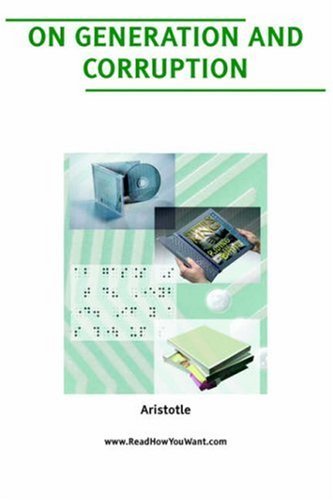What do you think?
Rate this book


160 pages, Paperback
First published January 1, 337
... it is commonly supposed that ‘touching’ must be reciprocal. The reason of this belief is that ‘movers’ which belong to the same kind as the ‘moved’ impart motion by being moved. Hence if anything imparts motion without itself being moved, it may touch the ‘moved’ and yet itself be touched by nothing—for we say sometimes that the man who grieves us ‘touches’ us, but not that we ‘touch' him.
... it is a law of nature that body is affected by body, flavour by flavour, colour by colour, and so in general what belongs to any kind by a member of the same kind—the reason being that ‘contraries’ are in every case within a single identical kind, and it is ‘contraries’ which reciprocally act and suffer action.
Coming-to-be and passing-away will, as we have said, always be continuous, and will never fail owing to the cause we stated. And this continuity has a sufficient reason in our theory. For in all things, as we affirm, Nature always strives after ‘the better’. Now ‘being’ … is better than ‘not being’: but not all things can possess ‘being’, since they are too far removed from the ‘originative source’. God therefore adopted the remaining alternative, and fulfilled the perfection of the universe by making coming-to-be uninterrupted: for the greatest possible coherence would thus be secured to existence, because that ‘coming-to-be should itself come-to-be perpetually’ is the closest approximation to eternal being.
Then are all the things that come-to-be of this contingent character? Or, on the contrary, is it absolutely necessary for some of them to come-to-be? Is there, in fact, a distinction in the field of ‘coming-to-be’ corresponding to the distinction, within the field of ‘being’, between things that cannot possibly ‘not-be’ and things that can ‘not-be’? For instance, is it necessary that solstices shall come-to-be, i.e. impossible that they should fail to be able to occur?